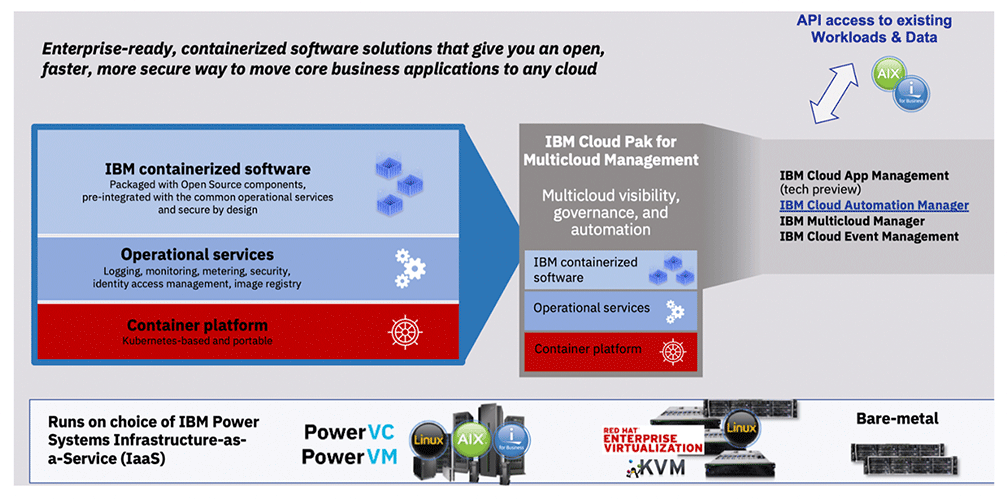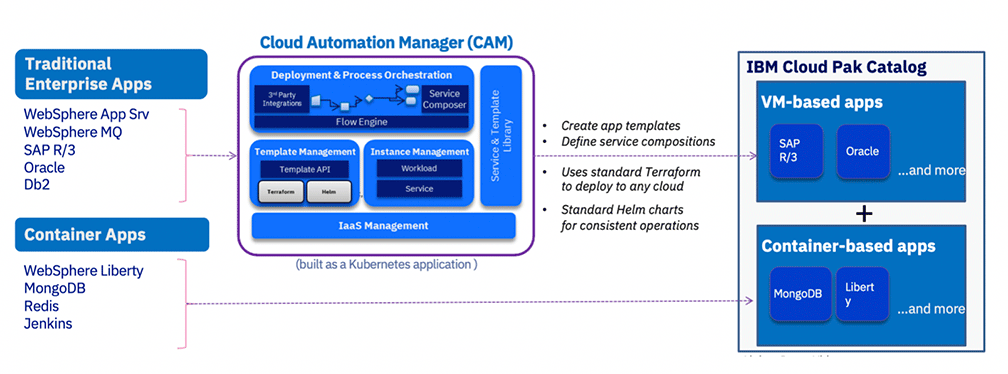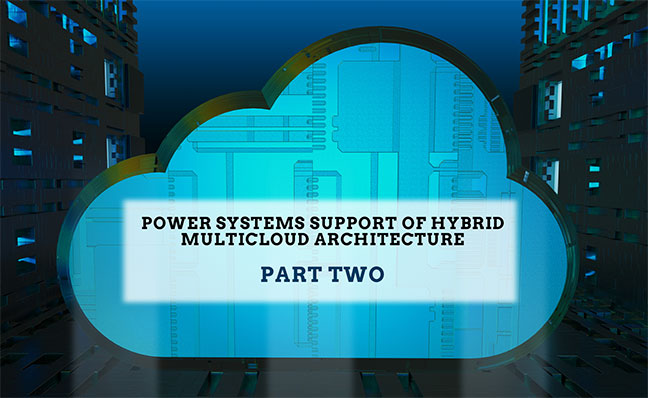Ron Gordon
Director » Power Systems
The latest 2019 IDC surveys reported that 73% of enterprise companies consider movement between clouds a priority and 67% of those described consistency of management essential. IDC also reported that 94% of companies are using a blend of on-premise (private cloud) and off-premise (public cloud) services and 67% of those use two or more public cloud providers.
Hybrid Cloud and Multicloud
The data center cloud experience, using a combination of on-premise and public cloud resources, requires consistency, interchange, and a supporting architecture. These elements came from the open source community in products and tools like OpenStack, Terraform, Chef, Ansible, Docker and, most recently, Kubernetes (K8s). This usage of both the on-premise cloud and public cloud has been named hybrid cloud and the fact that companies used multiple public cloud providers further morphed that name to hybrid multicloud.
With the advent of hybrid multicloud environments and the necessity of consistent management across multiple public cloud vendors and the on-premise private cloud, the question now becomes “How can this be done effectively and efficiently?” Before answering that, there is another change happening called application modernization that helps us address the question.
Application Modernization
Application modernization is a change in the agile development process, integrated development environment (IDE), and application organization. This modernization marks a move away from monolithic, highly vertical applications using a bunch of application segments tied together by APIs and compiled to run as a single binary in a single virtual machine with its associated complete operating system version, storage, and networking. With a standardized approach using Linux, containers support a standard defined by the Open Container Initiative (OCI), where the applications are made of microservices, converted to a portable agnostic container via Docker and evolving tools from Linux providers such as Builda, Podman, and Skorpeo from RedHat, linked by APIs in a POD, and managed by K8s using procedures called Helm charts for management and disposition. The microservice containers can be easily updated individually because of their single-function logic based on business needs and automatically update the overall application suites.
Kubernetes can provide the provisioning of the application into a cluster of servers called worker nodes which are managed by the K8s master node. K8s can provide security, high availability (HA), disaster recovery (DR), and scale as needed. K8s clusters can likewise be set up separately for various production environments, dev/test, and staging to meet security and management needs. And, the cluster can be hosted on on-premise servers or cloud services from Amazon, Microsoft, Google, or IBM. All of this is enabled on IBM Power Systems for Linux development and containerized applications such as IBM WebSphere and DB2 as well as most open-source applications like Mongo and AI frameworks.
IBM Power Systems and IBM Cloud Paks for Multicloud Management
The requirement was one of consistent management. Kubernetes, Linux, Docker, Terraform, Ansible, and OpenStack are all open source and are enabled to run on IBM Power Systems as well as x86 and IBM System Z. Limiting the conversation to IBM Power Systems, a single K8s cluster can contain IBM Power Servers on premise and Power Systems hosted in the IBM Cloud, GCP, and Skytap. Since these are Linux-enabled code sets, the OS of the receiving system need only be an architected Power Linux container-enabled platform.
The solution required to provide consistent management across this hybrid multicloud environment has been created by IBM providing application and integration code and Red Hat providing Linux and Red Hat OpenShift (which contains K8s) in a family of products called IBM Cloud Paks. There are five IBM Cloud Paks:
- Cloud Pak for Data, which provides data integration and AI capabilities
- Cloud Pak for Integration, to connect the microservices and provide governance
- Cloud Pak for Applications, providing databases, web services, and web tools
- Cloud Pak for Security, providing security tooling
- Cloud Pak for Multicloud Management, providing consistent visibility, governance, and automation

But this seems to leave out AIX and IBM i since these are not Linux. To accommodate the AIX and IBM i environments, IBM Cloud Pak for Multicloud Management contains a product called Cloud Automation Manager (CAM) which manages virtual machine portability in cloud environments where the virtual machines created by IBM PowerVM in IBM Power Systems can contain AIX and IBM i workloads. CAM has the ability to capture the virtual machine image, define it in the K8s registry, and deploy it into any of the IBM Power Systems cluster nodes or cloud nodes.

This blog provides a high-level view into the evolving cloud services environment and how IBM Power Systems and Power-Systems-enabled public cloud offerings can be utilized to optimize the operational needs of today’s businesses. For a review of your operational needs and a deeper investigation, please contact your Mainline representative or
or click here to contact us with any questions..
You may be interested in:

